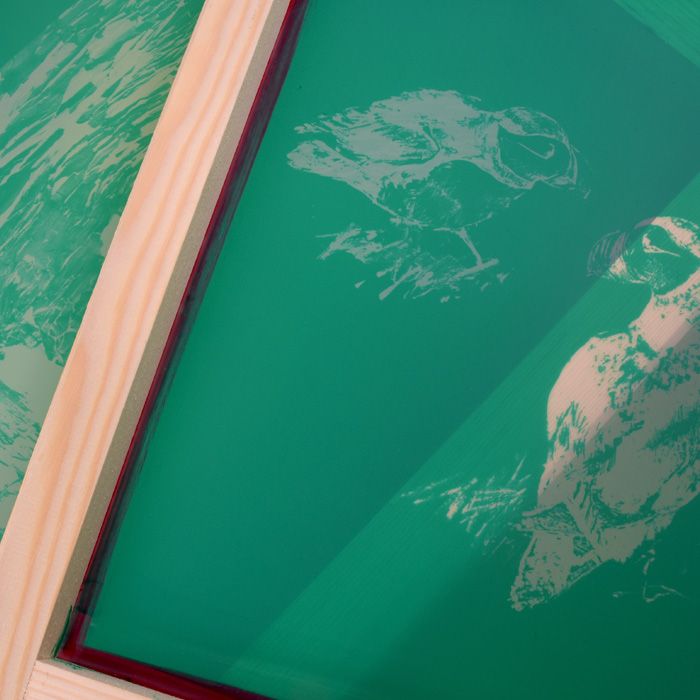Professional Screen Printing Kit for Custom Apparel
Professional Screen Printing Kit for Custom Apparel
Blog Article
Display Printing Uncovered: Every Little Thing You Required to Learn About T-Shirt and Garment Printing Strategies
Screen printing is a remarkable technique that combines art with method, supplying limitless opportunities for imagination. All set to check out the necessary aspects that make screen printing an art form?
The Fundamentals of Screen Printing: Just How It Works
When you dive right into screen printing, you'll uncover it's both an art and a scientific research. At its core, display printing entails developing a stencil, or display, that enables ink to pass through only in specific areas.
Placement the screen over the textile, then make use of a squeegee to push ink with the screen onto the garment. Each step is crucial, and mastering them will certainly raise your display printing abilities, changing straightforward garments right into special, expressive pieces.
Kinds of Screen Printing Methods
As soon as you comprehend the essentials of display printing, it's time to explore the various methods that can raise your layouts. One popular method is conventional display printing, where ink is pressed via a stenciled screen. This strategy is terrific for vibrant, lively shades. Then there's water-based ink printing, which offers a softer feeling and is eco-friendly, however it calls for a various approach to healing.
Another choice is plastisol printing, recognized for its sturdiness and vivid shades, making it a preferred for numerous brands. Experiment with halftone printing to produce gradient impacts and intricate styles.
Important Devices for Screen Printing
To achieve magnificent results in screen printing, having the appropriate devices is fundamental. You'll require a sturdy display printing framework, which holds the mesh that moves your style onto the garment. Next, invest in top notch mops; these are important for applying ink uniformly across the display.
Picking the Right Inks and Materials
When picking inks and materials for display printing, you require to think about the kind of ink that functions ideal for your task. Consider fabric compatibility to guarantee your layouts look great and last lengthy. Discover environment-friendly ink choices to make your printing procedure more sustainable.
Types of Display Inks
Selecting the appropriate screen ink is important for attaining vivid, sturdy prints that satisfy your project's requirements. There are numerous types of display inks to examine. Specialty inks, such as glow-in-the-dark or metal, can include one-of-a-kind impacts to your styles.

Textile Compatibility Considerations
Understanding fabric compatibility is important for achieving high-quality screen prints, especially because different products respond distinctively to numerous inks. Constantly test your inks on example material to guarantee they adhere properly and maintain shade honesty. In addition, keep in mind that fabric weight and appearance can influence the last outcome, so picking the right ink and product combination is important for your project's success.
Eco-Friendly Ink Options
Environmentally friendly inks are coming to be a prominent selection for screen printers who want to lessen their environmental impact while maintaining high quality. When choosing inks, consider water-based inks, which are much less unsafe and less complicated to clean up compared to typical solvents. These inks bond well with textiles, supplying vibrant results without harmful chemicals. You may also discover eco-solvent inks that use fewer volatile organic compounds (VOCs), making them a more secure choice for both your wellness and the world.
Additionally, look for inks made from renewable energies, such as soy or vegetable-based options. By selecting the ideal inks and materials, you'll not only develop magnificent layouts however additionally add to a much more lasting printing procedure. Make the switch, and your prints will certainly mirror your commitment to the environment!
Preparing Your Style for Screen Printing

Submit Format Requirements
To guarantee your design looks vibrant and sharp on fabric, you'll require to pay close interest to file layout requirements for display printing. Make sure your style has a clear background to stop unwanted white sides on your prints. Maintain shade settings in mind; CMYK is common for screen printing, so convert your RGB creates as necessary.
Color Splitting Up Methods
Shade separation is a necessary action in preparing your design for display printing, and grasping it can substantially boost your print high quality. You'll need to damage your design right into individual shades, as each shade needs a separate screen during printing. Beginning by recognizing all the shades in your style and create layers each. You can utilize software like Adobe Photoshop or Illustrator to isolate and different shades effectively. Be specific to conserve each layer as a different file, commonly in a style like TIFF or PSD. This accuracy not just assures precise shade depiction but likewise improves the printing process. By taking notice of shade splitting up, you'll attain vibrant and specialist lead to your screen-printed garments.
Resolution and Dimension
Accomplishing the most effective outcomes in display printing begins with guaranteeing your style has the ideal resolution and dimension. Ideally, your art work must go to least 300 DPI (dots per inch) for sharp, clear prints. Your final product may look amateur and pixelated. if you use lower resolution.
When it concerns dimension, take into consideration the measurements of your print area. Style your artwork to match the last print dimension, preferably creating it in the actual measurements you'll be publishing. This method, you'll avoid any unexpected scaling issues.
Always check your style in both vector and raster formats. Vector graphics can be scaled without losing top quality, making them excellent for display printing. Preparing properly will ensure your style looks remarkable on discover here every garment!
Step-by-Step Screen Printing Process
Display printing is a vibrant procedure that allows you to create vivid layouts on different surface areas. To get going, you'll need a display, emulsion, and your chosen ink. Initially, prepare your display by cleansing it extensively. Next, apply the emulsion uniformly and let it dry in a dark location. Once dry, reveal your display to light with your design positioned on it, which will harden the solution where the light hits, creating a pattern - screen printing kit.
After rinsing the unexposed solution, your screen prepares. Establish it up on your printing surface and align your garment underneath it. Put ink onto the screen and make use of a squeegee to press the ink via the pattern onto the fabric. Raise the screen very carefully and allow the print dry. Lastly, heal the ink utilizing warm to assure durability. That's it! You've successfully display printed your design.
Tips for Successful Screen Printing Projects
While you're diving into your display printing jobs, bear in mind that preparation is crucial to success. Begin by collecting all your products-- inks, screens, squeegees, and garments. A clean office aids protect against unwanted mistakes, so clean up before you begin.
Following, validate your art work is high-resolution and properly sized for your garment. Evaluate your display for appropriate direct exposure and tidy it extensively to prevent smudges. When blending your inks, comply with the producer's guidelines to attain the right uniformity.
During printing, use also pressure with your squeegee for consistent results. Do not hurry; take your time to confirm each print fulfills your standards. After printing, let your garments dry completely prior to taking care of or packaging them.
Last but not least, always maintain an example of your job for future reference. This way, you can evaluate your development and boost your techniques gradually. Delighted printing!

Often Asked Questions
For how long Does It Require To Establish a Display Printing Job?
Establishing up a screen printing work generally takes around thirty minutes to an hour. You'll prepare the screens, mix inks, and change the press. The moment differs based on complexity and experience, so remain organized!
Can I Publish on Different Material Keys In Making Use Of the Same Method?
Yes, you can publish on different fabric kinds utilizing the exact same technique, however you'll need to readjust your setups and inks. Some materials soak visit this site up ink in a different way, so trying out warranties the finest results for each product.
What Are Typical Errors to Prevent in Display Printing?
When display printing, stay clear of common errors like making use of the wrong ink, disregarding appropriate direct exposure times, or skipping pre-press checks. Always test your setup and keep tidy screens to assure high quality outcomes each time.
How Can I Appropriately Clean and Keep My Screen Printing Tools?
To effectively tidy and keep your screen printing devices, you need to consistently wash screens with ideal solvents, check mops for wear, and assure all tools are saved dry and dust-free. Consistency prevents expensive repairs and improves performance.
Is Display Printing Ecologically Friendly Compared to Various Other Approaches?
Display printing can be extra eco-friendly than various other techniques, particularly if you utilize eco-conscious materials and water-based inks. By picking sustainable supplies and techniques, you reduce waste and decrease your impact on the earth.
Display Printing Uncovered: Every Little Thing You Required to Know About T-Shirt and Garment Printing Techniques
At its core, screen printing involves producing a pattern, or screen, that allows ink to pass see page with just in details areas. Position the screen over the material, after that utilize a squeegee to press ink via the screen onto the garment. One preferred approach is typical display printing, where ink is pressed through a stenciled screen.When selecting inks and materials for display printing, you need to take into account the kind of ink that works best for your project.
Report this page